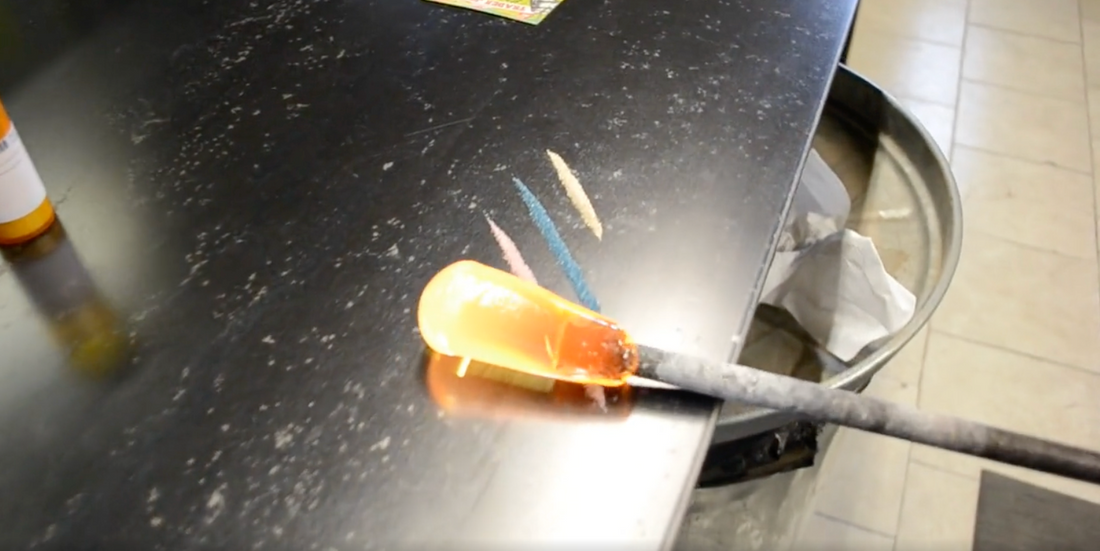The modern art of glass blowing may use modernized equipment, but the essence of working with glass remains an ancient art. Molding red-hot liquid glass to create a lasting glass artifact is an act that requires a creative mind, dexterous hand work, and stamina. It is very physically draining work.
Throughout history, the basic knowledge and techniques of glass blowing have been highly coveted, and at times, held sacred by only a select few. This information was handed down secretively from glass blower to apprentice for thousands of years.
Throughout history, glass blowers were literally held hostage for fear of their knowledge being leaked. During the 1st Century A.D., Phoenician glassworkers were forbidden from traveling, although those who escaped spread the art form into present day Switzerland, France, and Belgium. Similarly, for Venetian glassblowers, leaving the island of Murano was a crime, punishable by death.
Glass can occur naturally; causes include volcanic eruptions, lightening strikes, and meteorite impacts, during which certain rocks melt at high temperature, then cool quickly and solidify. Such natural glass includes obsidian, from volcanic origin, and obsidianite, from extraterrestrial origin.
Many cultures accidentally discovered glass making. Shipwrecked Phoenician sailors are said to have discovered it when they built cooking fires on a sandy beach. It is also said that potters in Egypt and Mesopotamia discovered glass through trial and error in glazing their pottery.
Here are some historical highlights in glassblowing and glassmaking around the world:
- 16th Century B.C. ~ Oldest known glass vessel fragments were created during this period in Mesopotamia. There is also evidence of independent glassmaking in Greece (Mycenae), China and North Tyrol
- 15th Century B.C. ~ Glass vessels are first produced in Egypt
- 500 B.C. ~ Glass vessel production begins on the Italian peninsula at the start of the Roman Republic
- 50 B.C. ~ Glass blowing techniques invented by the Phoenicians on the Syro-Palestinian coast
- 23-79 A.D. ~ Ancient Historian Pliny suggests shipwrecked Phoenician sailors accidentally discovered glass making
- 1st Century B.C. ~ Cologne, Germany becomes major glass blowing center of the Roman Empire
- 1st Century A.D. ~ Rome, Italy becomes major glass blowing center of the Roman Empire. Romans begin using clear glass windows in important architecture
- Late 1st Century A.D. ~ Glass blowing begins in Switzerland, France, and Belgium
- 3rd Century A.D. ~ Glass blowing techniques described in an Egyptian poem written on papyrus
- 4th Century A.D. ~ Glass blowing begins in Spain and Croatia
- 5th Century A.D. ~ The Renaissance period revitalizes Italy’s glass industry, specifically on the island of Murano, off the Venetian coast. The progression of glassmaking techniques slows with the decline of the Roman Empire causing less ornate pieces
- Late 6th Century A.D. ~ Byzantines created glass with Jewish and Christian religious symbols in Jeruselum
- Early 1200s A.D. ~ The Venetian Glassmakers Guild was established
- 1291 A.D. ~ All Venetian glassmakers are forced to live on the island of Murano, which protected Venice from potential fires, and controlled the sharing of glassblowing knowledge. Venetian glassmakers invented glass mirrors and crystal.
- 1607 A.D. ~ Glassblowing is brought to America by the Jamestown colony settlers
- 17th Century A.D. ~ The book L’Arte Vetraria (The Art of Glass) by Antonio Neri was published, sharing the secrets of glass and glass making with the world
- Mid-17th Century A.D. ~ English glassblowers invent dark green “black glass” which was used to make storage vessels. It blocked out light, preventing damage to the goods contained within. England became the leading bottle distributor
- 1676 A.D. ~ English glassmaker George Ravenscroft invents leaded glass
- 1688 A.D. ~ Production of plate glass for use in mirrors begins in France
- 1784 A.D. ~ Benjamin Franklin invents bifocal eyeglasses
- 1820s A.D. ~ The mechanical press makes glass production easier and faster
- 1845 A.D. ~ Glass is now commonly used in homes as drinking glasses, butter dishes, honey jars, flower vases, and other dishes
- 1903 A.D. ~ The automatic bottle blowing machine is invented by Michael Owens, allowing production of millions of light bulbs a day, and eliminating child labor in the glassmaking industry
- 1960 A.D. ~ The studio glass movement begins, where glass artists begin to work in their own glass studios, experimenting with various glass techniques. This movement continues to present day
- Present Day ~ Advances are continuing to be made in glassmaking as the technological evolution create new equipment and techniques

